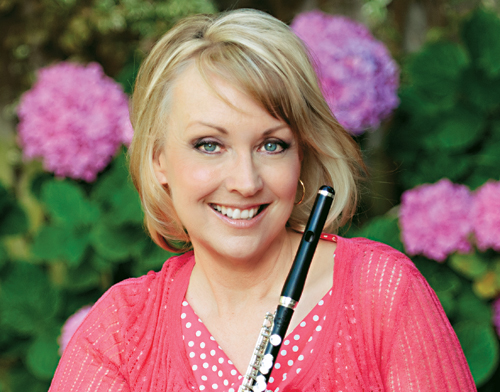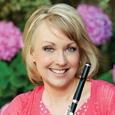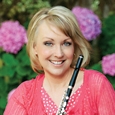
Auditions are a fact of life if you would like to join a professional orchestra. There are fantastic books and articles with tips on the mental preparation and stamina needed to make the most of this very specific kind of job interview, but the beautiful and confident execution of the excerpt list is mandatory for audition success.
Each type of orchestra will have a different audition list that covers the various styles of repertory and different musical and technical demands. Verdi and Puccini excerpts will be required for opera positions; Delibes’ and Tchaikovsky’s ballet music are used for ballet orchestras.
A piccolo chair will also be required to play flute from time to time, so there will be flute excerpts to perform on most piccolo auditions. Audition lists may have two or three flute excerpts or a more comprehensive list including a Mozart Flute Concerto and many standard principal flute excerpts. Three of the most common flute excerpts are Debussy Prélude à l’après-midi d’un faune, Beethoven Leonora Overture No. 3, Op. 72, and Brahms Symphony No. 4, Op. 98.
Some orchestras tailor the flute component of the piccolo audition to target the kind of flute playing piccolo players will perform on the job, such as the second flute solos in Ravel’s Ma Mère l’Oye (Mother Goose) or Dvorák’s Symphony No. 9, Op. 95 as well as excerpts showcasing low register tonguing. The Mendelssohn Scherzo from A Midsummer Night’s Dream and the third flute part to the Dance of the Reed Flutes from Tchaikovsky’s Nutcracker Ballet are common examples of low register articulation seen on the job and on audition lists.
Most audition lists require a solo piccolo concerto, and the Vivaldi Concerto in C Major is the overwhelming choice, analogous to the Mozart concerto for most flute auditions. Vivaldi requires virtuosity and rock solid rhythm in the outer movements. The second movement is often on audition lists as it gives a committee the chance to hear expressive playing and some creativity with ornamentation and style. Working with an accompanist is always helpful when preparing the concerto component of an audition.
Since the piccolo made its debut in orchestras during the latter part of the Classical period, there are only a few excerpts from this period commonly seen on audition lists: Beethoven Symphony #9 (the Turkish March section) and Rossini overtures. The Beethoven excerpt showcases intonation between the octave Ds that are the foundation to the melody, and the entire passage shows the player’s ability to crescendo throughout the long and somewhat repetitive melody. The Rossini overtures need dexterity in articulation and technique, requiring a light touch and good sense of phrasing. Both Semiramide and La Gazza Ladra are favorite excerpts for opera orchestras and symphonic jobs, so learn both of them. Mozart’s operas have a few tricky piccolo parts especially The Magic Flute, Act 2.
The Romantic period has two composers who commonly make the audition lists: Tchaikovsky and Berlioz. The Scherzo from Tchaikovsky’s Symphony No. 4 requires brilliant technique in both the first woodwind tutti entrance and the famous but short solo passage that follows. It is a rare audition list that does not include this solo. The Damnation of Faust, Menuet de Follets (Dance of the Sprites, piccolo 1) showcases a lyric style at the beginning and brilliant articulation at the Presto. Both sections frequently make the audition lists.
The 20th century is where the majority of piccolo excerpts come from on audition lists. Shostakovich wrote many different kinds of solos for the piccolo, from heartbreaking soulful adagios to lightning fast high and sardonic passages. Symphonies 5, 6, 7, 8, 9 and 10 are all quite common. The slower solos are always transparent and require creating an atmosphere with gorgeous tone colors and accurate intonation. Often Shostakovich writes with very long, sustained soft notes, so be sure to practice long tones that prepare for these musical demands. The presto passages require rhythmic integrity and usually range well into the third octave. Make sure the tone quality is full during the fortes, never forced.
Stravinsky’s Firebird Suite, 1919, Variation de l’oiseau de feu, is a common excerpt that showcases technique and ensemble skill. This piece is very intricate and accurate rhythm is vital as the parts really dovetail from one line to the next. To get a feel for the ensemble playing, play this variation as a duet with another flutist.
Ravel wrote quite well for the piccolo and several of his compositions frequent audition lists: Bolero, Mother Goose Suite, the Piano Concerto in G, and Daphnis et Chloé. Each excerpt highlights a slightly different piccolo skill but both the Piano Concerto (opening measures) and movements four and five from Mother Goose (Petite Poucet and Laideronnette) feature the low register. Bolero is placed on lists so that committees can hear how softly and in tune piccoloists can play on the tricky passage with horn and two piccolos (3 measures after 8-9). The Daphnis excerpt is usually the “sunrise” passage at the opening of the suite. Make sure to project this mid-register solo and be careful to mark the rhythmic differences between triplets and duple rhythms.
The Bartók Concerto for Orchestra and Prokofiev’s Lieutenant Kije usually round out the list of solos which are virtuosic in every way. The Elegia movement has some of the most beautiful and delicate writing in all of the literature while the last movement has a tutti passage that goes all the way up to high C. The Kije Suite excerpts are usually from movement one (Birth of Kije) and the Troika, 51-52. Contrast is the name of the game here too, since each solo is a polar opposite, from delicate to bold and spunky.
Preparing for an audition means listening to the entire work, not just the 10-second clip you will perform in the audition. Study the entire part and its place in the full score. Good consistent practice habits are important, and it is important not to tire the lips when working on the extreme high register passages. Record yourself frequently, play for colleagues or coaches, use a metronome, tuner and pencil to mark corrections, and try to enjoy the process of preparation. Make these excerpts your friends, and play them on a regular basis so you will be prepared.
* * *
Shostakovich Piccolo Excerpts
Slow/Adagio/Sensitive Excerpts
Symphony No. 5, Mvt. 1, Measures 41-42, 45-46
Symphony No. 6, Mvt. 1, Measures 4 before Circle 9 through Circle 10
Symphony No. 7, Mvt. 1, Measures 14-18
Symphony No. 8, Mvt. 4, Largo, Measures 60-66
Symphony No. 9, Mvt. 2, Final 18 measures
Symphony No. 10, Mvt. 1, 69 to end
Symphony No. 10, Mvt. 3, Largo
Fast/Brilliant/Technical Excerpts
Symphony No. 8, Mvt. 2, Measures 65-118
Symphony No. 9, Mvt. 1, 8 measures before B to 14 measures after B.
Symphony No. 9, Mvt. 3, Circle A, measures 1 – 8 and 8 measures before F.
Symphony No. 10, 1 measure before 156 through 158.






